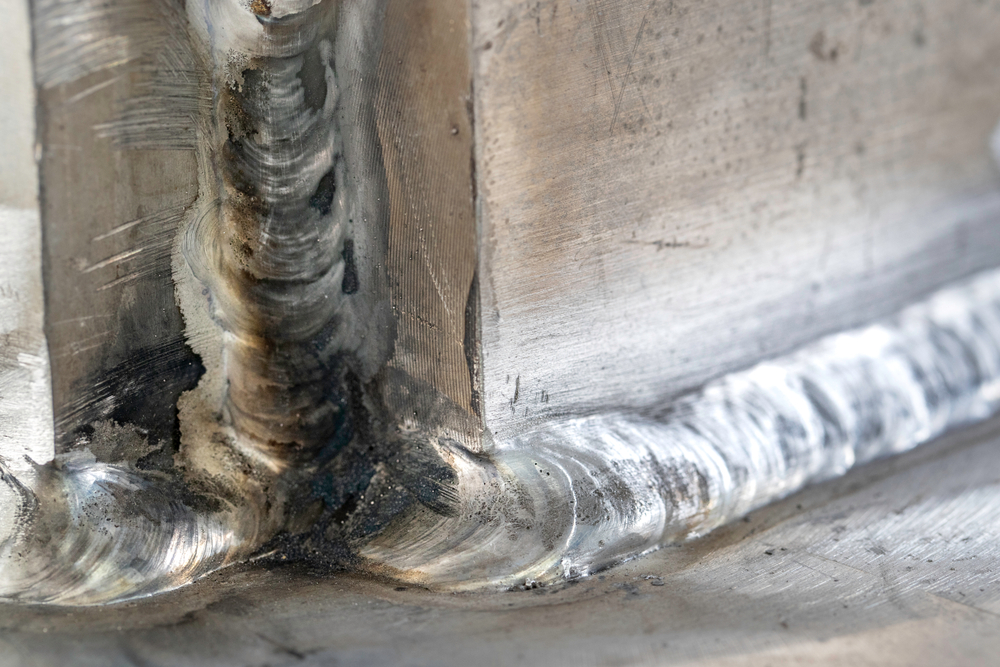
Can you weld aluminum with direct current? Although alternating current is the preferred way and direct current has its own limitations when working with sensitive metals, it is possible to use direct current in welding aluminum. But before you make the selection between AC or DC, the critical part is to be aware of all the challenges of working with aluminum.
Aluminum has delicate properties. It is soft, ductile, and lightweight but also corrosion-resistant. These properties make aluminum a suitable choice for industries like aerospace. Still, without the right welding method, the issues of arc blow, burn-through, and incomplete penetration can damage the weld. So let’s discuss how alternating and direct current can affect the weld results when working with aluminum.
Aluminum and the Preferred Welding Method
As mentioned, alternating current is the preferred choice when welding aluminum. One of the reasons for this is aluminum’s high sensitivity to oxidation. Exposure to atmospheric oxygen forms a layer of aluminum oxide, creating issues when starting an arc. It usually requires high heat input to break through the oxide layer. But using excess heat can burn through the soft aluminum base metal.
The benefit of alternating current for aluminum welding is its constant polarity change. As the direction of electron flow changes constantly, it creates a sandblasting effect on the oxide layer, breaking it down. The weld thus formed is clean and free of contaminants. However, the challenges of achieving these results with AC welding are –
- Precision control of heat in the weld pool
- Potential burn-through and contamination
- Lack of penetration when working with thicker workpieces
Through precision parameter control and AC technology, such as square wave inverters, AC welding can be made more effective and economic.
You can also opt for using direct current in welding aluminum. Let’s weigh the advantages and disadvantages of this option.
When To Use Direct Current for Aluminum Welding?
The drawback of AC welding is that DC welding can be of advantage. The direct current produces a stable arc due to the constant flow of current in a single direction. So, it is able to generate enough heat to properly weld aluminum workpieces with thicknesses greater than ¼ inch. When TIG welding, the electrode negative direct current (DCEN) is preferred for deeper penetration while electrode positive direct current (DCEP) is capable of breaking down the oxide layer.
While DC welding can be the best fit in some scenarios, it is essential to be aware of its limitations –
- Without precision control, greater heat input is produced when DC welding can burn through the workpiece.
- Pre-weld cleaning is a must. Only pure helium is suitable to use as a shielding gas with DCEN, but it does not provide any support in breaking down the oxide layer when welding.
- DC welding machines are more expensive which generally prompts operators to choose AC welding.
Despite the limitations, it is possible to get a good result when using direct current in welding aluminum with proper procedure and control.
AC or DC? – The Right Choice for Aluminum Welding
Adequate fusion, defect-free, strength, and purity are the markers of a good weld in all metals. For metals like aluminum, achieving this may come as a challenge given its affinity to damage with high heat input, which is essential to break down the layer of oxide. It is preferably an excellent option to choose AC welding if the requirement is to weld a thin aluminum workpiece in a single pass. For thicker aluminum, you can use DC welding to achieve a greater penetration depth in a single pass.
Regardless of the current type, it is essential to understand your workpiece and select the proper welding procedure— electrode types, welding technique, weld equipment, shielding gas, pre-cleaning requirement, metal thickness, etc., to ensure a high-quality weld.
Arc Machines, Inc provides a range of welding solutions that can assist you in producing a quality weld. If you want to learn more about the choice of alternating or direct current in welding aluminum or make product inquiries, contact sales@arcmachines.com. For service inquiries, contact service@arcmachines.com. Contact us to arrange a meeting.




